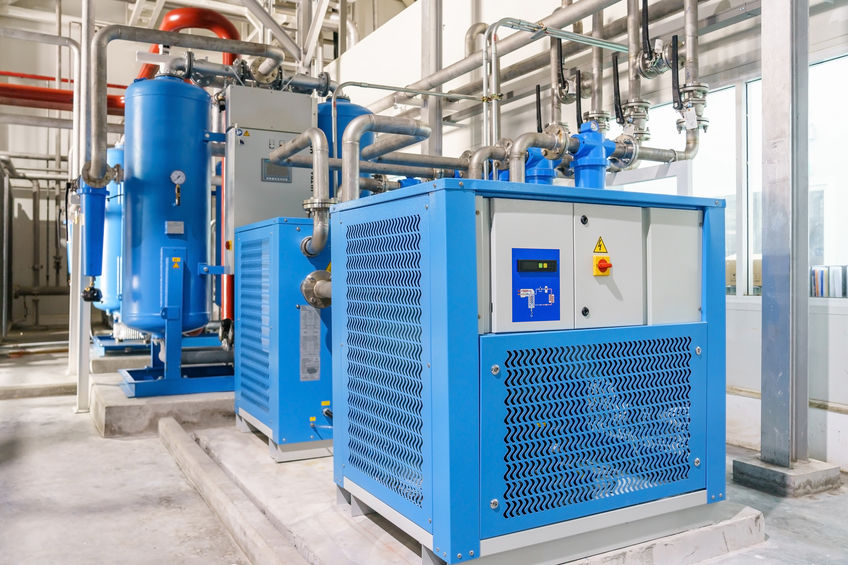Refrigerated Air Dryers Lower Compressed Air Dew Point

Widely used throughout manufacturing and other industries, air compressors generate significant amounts of water vapor during their operation. When water vapor goes unchecked, it can create moisture that wreaks havoc within the compressed air system, damage the tools and equipment the compressed air powers and compromise finished product quality.
To avoid these potential problems, it is critical to monitor the compressed air dew point within the system and to take measures – such as the use of a refrigerated air dryer – to keep water vapor from causing damage. This blog will discuss how the addition of a refrigerated air dryer can provide a cost-effective solution.
What is Compressed Air Dew Point?
Compressed air dew point is the temperature at which the water vapor in the compressed air transforms from a vapor into liquid condensation. Many air compressor users opt to use a refrigerated air dryer to lower the dew point in order to protect their equipment from damage caused by excessive moisture within the air compression system.
Lowering the compressed air dew point to remove moisture is important because the moisture it creates can lead to:
- Damage to the tools and equipment to which compressed air is delivered.
- Contamination such as rust and bacteria entering finished products or creating issues with adherence of paints and coatings.
- Refrigerated dryers don’t prevent freeze ups because their dew point is above freezing. For temperatures below freezing, desiccant dryers are used.
- False process control instrumentation readings due to rust and other contaminants captured within the system.
The Role of Refrigerated Air Dryers as Moisture Removers
While there are several different types of air dryers for compressors, this blog will focus on refrigerated compressed air dryers and how they serve as a compressed air moisture remover. Generally speaking, air dryers are used to separate water vapor from process air, rust and corrosion contamination and damage, faulty operation of process control instrumentation, and contamination of finished products.
Refrigerated air dryers, which operate via the same principle as home air conditioning systems in that they effectively cool the compressed air, work in stages, as follows:
- Compression: As air is compressed, its pressure and temperature are raised, causing the air to hold more moisture and resulting in higher humidity levels.
- Cooling: The hot, moist compressed air passes through a heat exchanger and cools down, causing the water vapor that has collected in the air to condense into liquid water so it can be separated from the compressed air.
- Separation: Condensed water droplets are then separated from the air and collected in a drainage system, such as moisture traps.
- Drying: Finally, the cooled, dehumidified air is typically reheated to a temperature close to the initial compressed air inlet temperature before it exits the dryer. Reheating the air prevents new condensation from forming as the treated air flows through the air distribution system. This also helps increase the energy efficiency of the air dryer because it pre-cools the intake of air, reducing the load on the heat exchanger.
Refrigerated air dryers are commonly used throughout the manufacturing industry as they offer:
- Low maintenance costs
- The ability to achieve dew points of 37°F
- Low initial cost
- Low operating costs
Monitoring the compressed air dew point is the first step in understanding damaging corrosion and other side effects of having too much moisture in the compressed air system. For more information on how to measure the dewpoint and how a refrigerated compressed air dryer can extend the life of your air compression system and production equipment while ensuring the quality and safety of finished products in a cost-effective way, please reach out to a JHFOSTER representative today.
